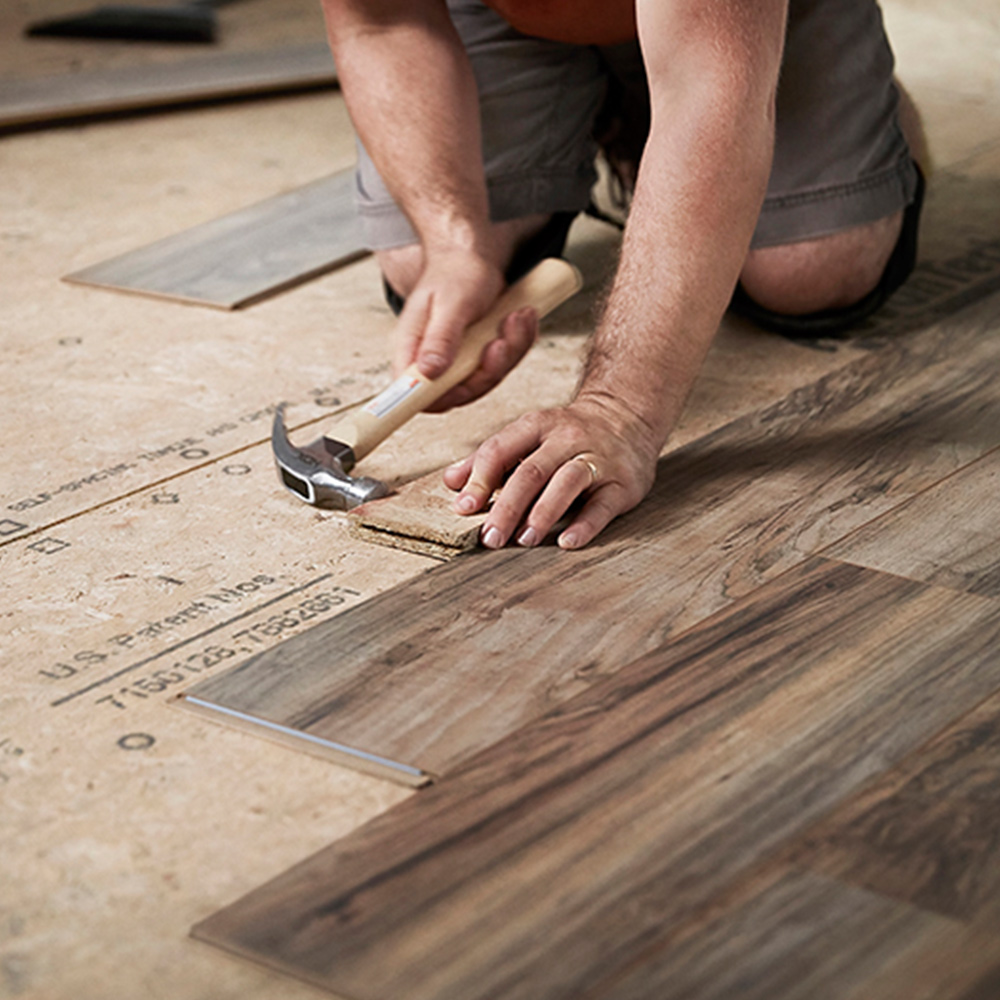Hardwoods are naturally more durable and stronger than softwoods. They come from broad leaf trees that grow for 100 to 800 years. Hardwoods are suitable for a large range of applications including construction, joinery, furniture, and flooring. As floors, hardwoods have a long lifespan of 50-100 years which increases the home’s resale value. Versatile in appearance, and less allergenic than carpeting, hardwoods are susceptible to humidity, moisture damage, scratches, and gouges. Overall hardwoods need low-maintenance and are easy to repair and refinish. Although hardwoods seem expensive initially, they hold their value over time.
Hardwoods can be classified into three main types:
- Tropical hardwoods classified as angiosperm with their seeds encased in pods or fruits. Kapa, Cumaru, and Sapel originate in Africa, Asia, and South America.
- Temperate hardwoods include deciduous trees, which are broadleaf trees that lose their leaves each autumn, and coniferous trees, which are narrow leaf trees that hold their leaves year-round. Ash, cherry, and maple come from the eastern United States, Canada, Western Europe, China, Japan, and Russia.
- European hardwoods mainly consist of oak and beech. Oak timber, genus Quercus, is native to the Northern Hemisphere, and includes deciduous and evergreen species extending from cool temperate to tropical latitudes in the Americas, Asia, Europe, and North Africa. European oak is now mostly sustainably sourced from the Forests of Croatia, France, and Germany.
Costs
The average cost of installing hardwood floors is $3–$10 per square foot for materials and $3–$8 per square foot for labor, totaling $6–$18 per square foot. A single 200-square-foot room might cost $1,200–$3,600, while a 2,000-square-foot house could cost $12,000–$36,000. Wood quality influences price, with high-end flooring costing up to $25 per square foot. Square footage is the greatest determinant of price. Solid hardwood is traditional, but you can also opt for engineered hardwood or parquet which has a lower product cost but can be labor intensive to install. The more durable and less common the wood type, the more it costs. Thicker boards can withstand more refinishing and therefore cost more. High-quality boards cost more than low-grade ones.
The way the boards are cut from the tree determines the amount of labor and waste. Plain-sawn or flat-sawn planks are cut parallel to the tree’s growth rings to create a wave or flame-like grain pattern. Quarter-sawn planks, on the other hand, are cut at a 60 to 90-degree angle from growth rings for a straighter grain pattern. Flat-sawn boards are more common and less expensive, while quarter-sawn boards are pricier but wear more evenly. The rarest and most expensive are rift-sawn boards, which have the most linear grain pattern but create the most waste.
Some tree species are more durable than others or better suited to certain types of climates. Generally, the harder and more durable the wood is, the more expensive it is. Here are some of the most common types of wood flooring and their characteristics:
- Maple: Light coloring, medium density, good for high-traffic areas $3 to $10 per sq. ft.
- Pine: Low cost, very soft, prone to dents, difficult to refinish $2 to $4 per sq. ft.
- Bamboo: Durable, shows few scratches, termite-resistant $2-$6 per sq. ft.
- White ash: Light color, bold grain, medium density $5 to $8 per sq. ft.
- Hickory: High density and hardness, variable in color $3 to $7 per sq. ft.
- Red oak: Consistent color and finish, high durability, medium price $2 to $6 per sq. ft.
- White oak: More water-resistant than red oak, lighter color $4 to $7 per sq. ft.
- Brazilian walnut: Rich color, high durability $5 to $10 per sq. ft.
- Cypress: Moderate durability, termite-resistant $4 to $6 per sq. ft.
- Cherry: Rich color, soft, best in bedrooms or low-traffic areas $4 to $7 per sq. ft.
- Teak: High price, very hard, scratch-resistant $9 to $13 per sq. ft.
- Mahogany: Dark color, ages well, medium price $6 to $8 per sq. ft.
Floor Joist Repairs
When replacing the existing flooring, the subfloor or joists may reveal mold, insect, or water damage. The joists and subfloor will need replacement at a cost of $2000 to $ 5000 dollars before the main floor can be installed.
Finishing and Coating
When installing new hardwood floors, the choice is prefinished boards from the factory or unfinished boards that will require sealant following installation. Unfinished boards are initially cheaper but have higher labor costs since the finishing must be done on-site. Different finishes have different costs, with polyurethane at low end and penetrating resin finish on the high end. Refinishing an existing floor, sanding and coating, can cost $3 to $8 per square foot. Replacing damaged boards is just a fraction of the overall cost of a full replacement floor.
Professional Hardwood Installers
Professional hardwood installers have training and experience to properly account for variables such as changing temperatures, humidity, and moisture protection. Improperly installed floors are prone to cracking, bowing, and warping over time. In the long run, significant money is saved having the hardwood floors professionally installed.

